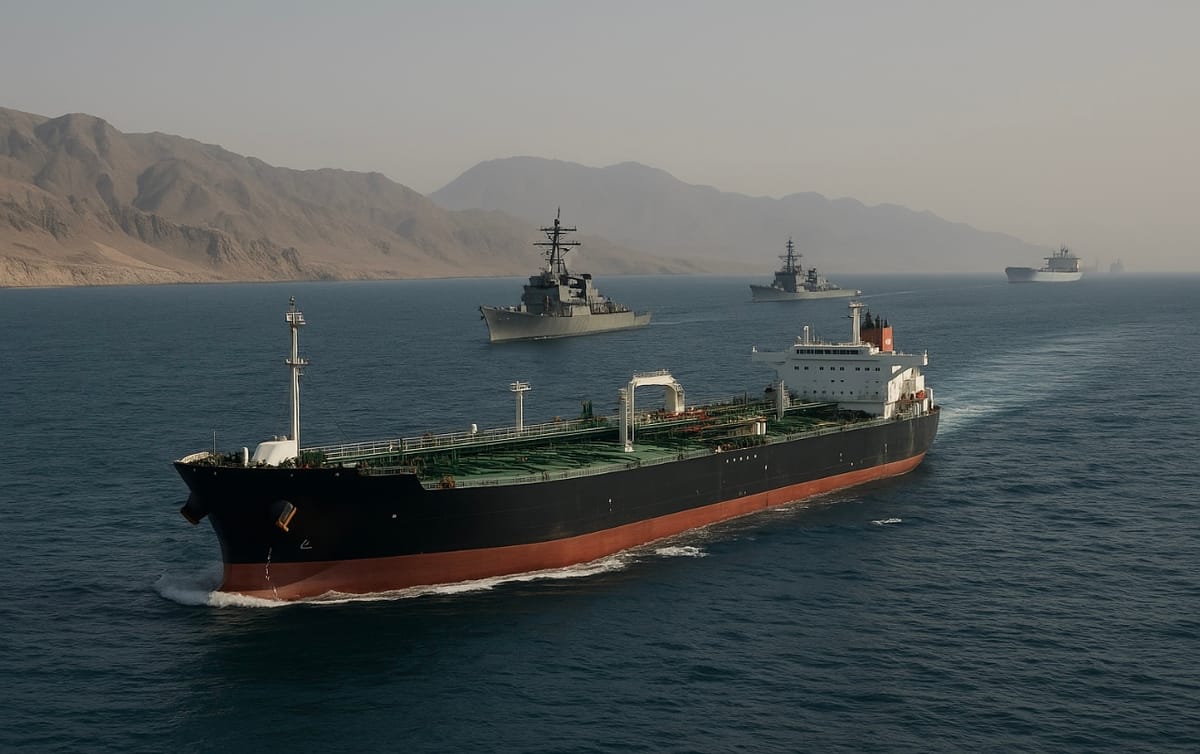Oil Price Surge Driven by Strait of Hormuz Threat
Brent crude oil rises 1% to $74.90 on fears of a Strait of Hormuz blockade. Global economy threatened, inflation spikes, markets volatile.

The surge in Brent crude oil prices is again drawing global attention as prices reached $74.90 per barrel, up about 1% on June 16, 2025. This increase was triggered by escalating tensions in the Middle East, especially Iran’s threat to block the Strait of Hormuz in response to Israeli attacks on Iran’s strategic energy infrastructure. The Strait of Hormuz is a vital shipping lane carrying 20–25% of global oil exports, so any potential disruption in this area immediately causes a domino effect throughout the world economy.
Geopolitical Tensions and Direct Impacts
In recent days, tit-for-tat military strikes between Israel and Iran have targeted oil, gas, and maritime infrastructure. Israel’s attacks on the South Pars Gas Field and Fajr-e Jam refinery provoked a strong response from Iran, which threatened to close the Strait of Hormuz. Analysts warn that such a move could cripple global oil supplies. These threats have triggered extreme market volatility, reflected in the price spike and increased demand for maritime insurance.
Center of Concern: Strait of Hormuz
The Strait of Hormuz has long been both a strategic and vulnerable geopolitical point. Every day, millions of barrels of oil and LNG pass through this narrow waterway. If Iran truly closes access, the world could lose about 12% of its oil supply. This could send oil prices soaring by $5–10 per barrel overnight. While the probability of a complete blockade is estimated at 25%, every strong statement from Tehran or military movement in the region is enough to drive price volatility and market anxiety.
Impact on the Global Economy
Rising oil prices are not just an energy issue—they quickly fuel inflation in many countries. Increased fuel prices drive up transportation costs, food prices, and other essentials. Central banks around the world, initially preparing to cut interest rates to support economic recovery, are now forced to reconsider. Fears of inflation are prompting more conservative monetary policies, shrinking the space for economic stimulus.
Exchange rates are also swinging. The US dollar as a safe haven strengthens, while emerging market currencies like the Indian rupee weaken sharply. Stock markets are now split: energy stocks are surging, while consumer, transport, and tourism sectors are under pressure. ExxonMobil and ConocoPhillips shares have jumped, while United Airlines and Carnival have dropped.
Logistics Barriers and Industry Response
Major tanker companies such as Frontline have stopped taking new contracts involving the Strait of Hormuz. The Greek and UK governments have issued advisories urging ships to avoid high-risk areas and record all movements in the Strait. The risk of piracy, drone attacks, and soaring insurance costs are further straining global logistics.
Central Banks on Guard, Markets Await Clarity
With so much uncertainty looming, central banks in many countries are holding back. Rate cuts are likely to be postponed until energy-driven inflation subsides. Analysts project that if tensions ease, oil prices could fall again. However, as long as rhetoric and military maneuvers persist, markets will remain shadowed by uncertainty.
Outlook and Strategic Analysis
If Iran truly closes the Strait of Hormuz, global supply could be disrupted by as much as 12 million barrels per day. This oil price spike will drive global inflation higher, burden economies, and suppress growth. If the conflict cools, the energy market may stabilize, though medium-term risks remain elevated. In this environment, market participants must closely monitor geopolitical developments and global monetary policy responses.





Comments ()